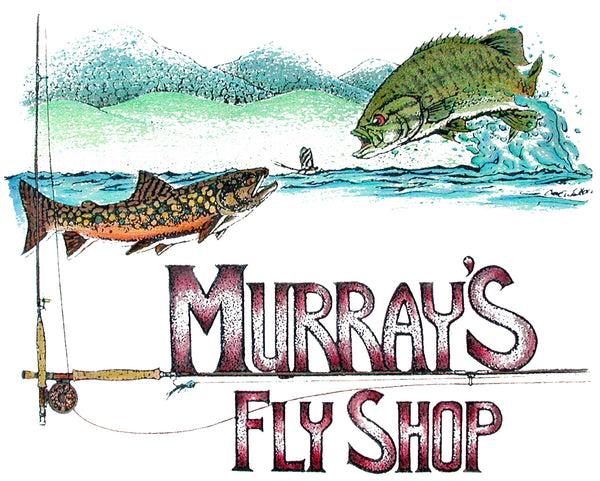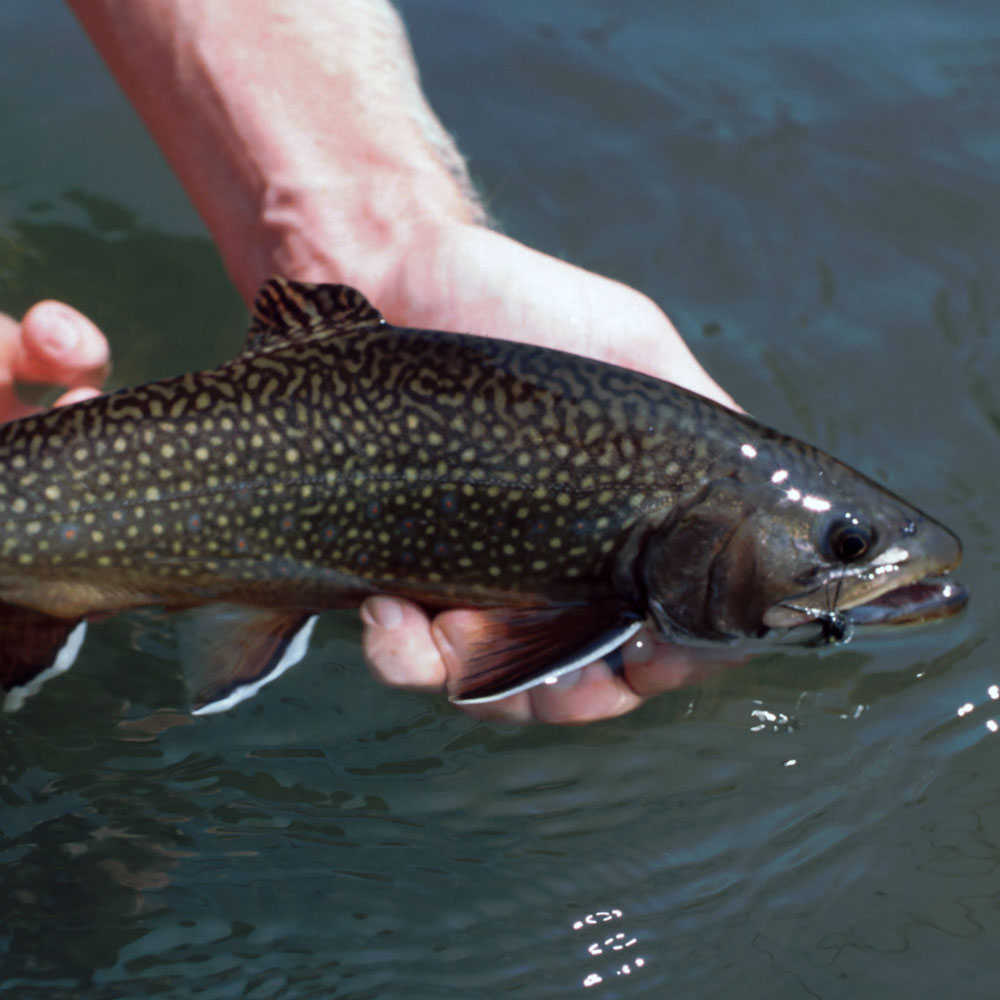
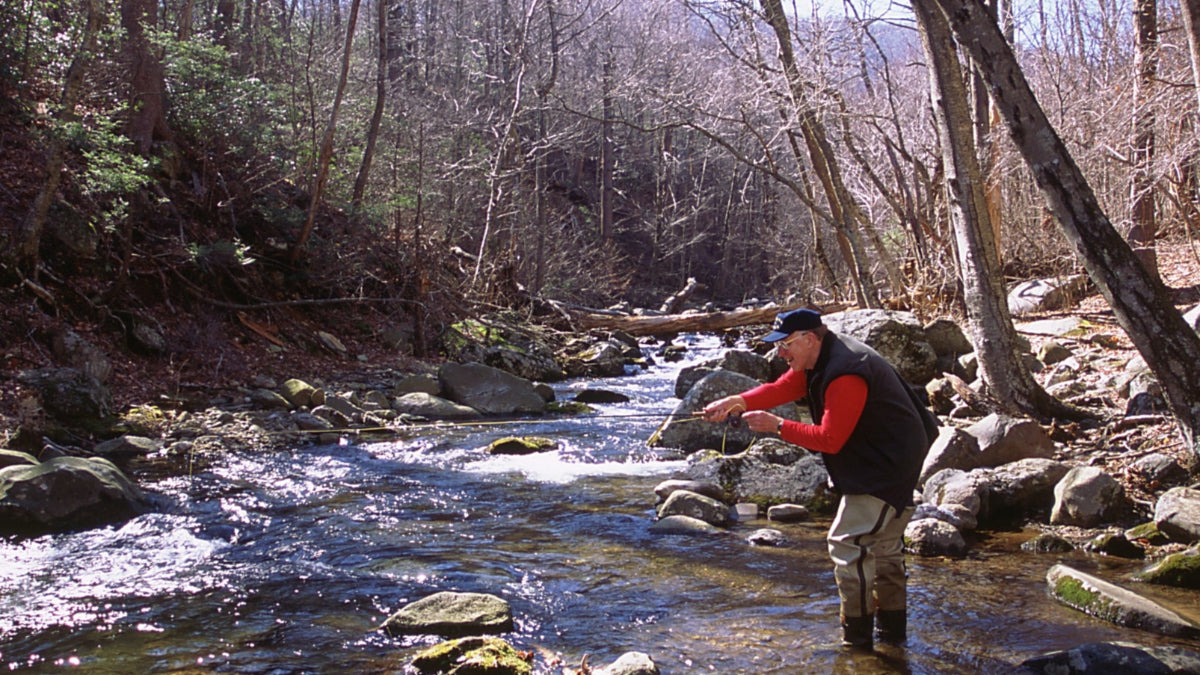
Fly Fishing Virginia's Passage Creek
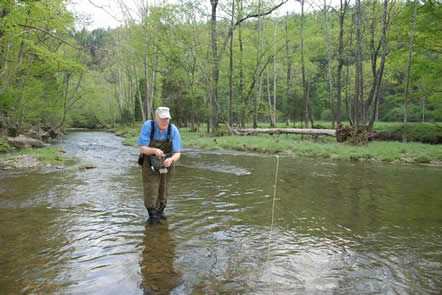
History of the Area
Passage Creek flows through the history-rich Fort Valley just east of Edinburg, Virginia. George Washington surveyed this area when he was young and there are well documented stories that he considered using this well protected area for his army. Stonewall Jackson’s “foot cavalry” used the valley frequently which would be expected since many of his men were from "The Fort”.
Fishing the Stream
This is such a great trout stream that the State of Virginia has placed one of its best sections in their Delayed Harvest management program. From October 1st through May 31st this section is well stocked and fished as a no kill stream.
Fall is a great time to fly fish Passage Creek so let’s begin our evaluation of this stream at this time and see the effective tactics and flies to use on through the winter, then we’ll look at the spring hatches and finally the summer tactics.
In October one of the best tactics is to use the Murray’s Flying Beetle #16 to go one-on-one with feeding trout that you see rising along the shaded banks. If you don’t see many fish rising use this same fly to fish along the runs below the riffles.
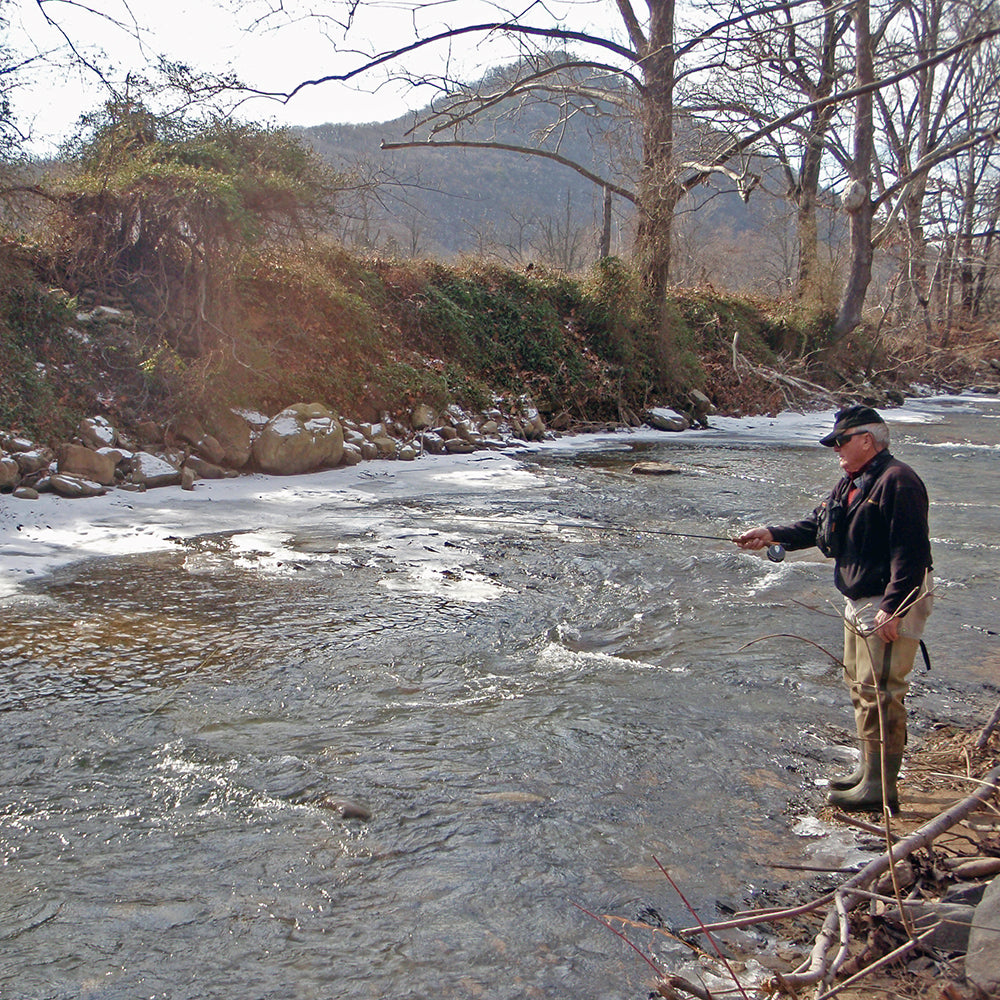
Fall Fishing on Passage Creek
When there is heavily overcast weather for several consecutive days in October there can be excellent hatches of beatis mayflies. These are well matched with the Mr. Rapidan Dry Fly #18 and Murray's Klinkhammer Dry Fly #18. Fishing this hatch is a great amount of fun because you just might have several large trout rising within casting distance of where you are standing. This hatch can last through November so keep an eye out for rising trout.
November to March
Starting in November and lasting until March you can hit midge hatches. These flies are moody and you may get good midge-fishing for five days in a row then not see them again for a week. The trout feed in two different methods on the midge hatch. You may see a delicate dimple on the surface indicating they are feeding on the adult midges. In this case drift a Birchell's Hatching Midge #20 or Mr. Rapidan Midge #22 over them on a 9 foot 6X leader and you’ll get great fishing. If you see splashy rises, swirls or leaping trout they are feeding on emerging midges. In this case switch to a Brassie #20 or a Pheasant Tail Nymph #18 and dress the leader with silicone floatant to within six inches of the fly and fish these just below the stream surface with a very slow two inch twitching action. Be gentle with this last ploy because it is easy to break off a large trout on the strike with this tight line retrieve.
Frequently winter rains and melting snows raise the level of Passage Creek slightly during the winter and some anglers go big fish hunting. Last winter a friend had a good fish follow a Murray’s Black Marauder #10 twice one evening but refuse to take it. He went back at dawn the next day and caught his trout which turned out to be a 4 pound rainbow on that same fly. A half hour later he caught a 3 pound rainbow twenty yards downstream from the first one. In addition to this fly the Murray’s Olive Strymph #10 and Black Strymph #10 are both excellent streamers during the winter.
A good streamer tactic on the narrow sections of Passage Creek is the “bounce retrieve”. Here you wade upstream and cast upstream. After the fly sinks deeply retrieve it back downstream with a series of lifting and dropping rod tip motions to make it look like a minnow swimming downstream. In the wide pools an across stream presentation is effective as you wade slowly down the stream and strip the fly three inches every five seconds to swim it along the stream bottom.
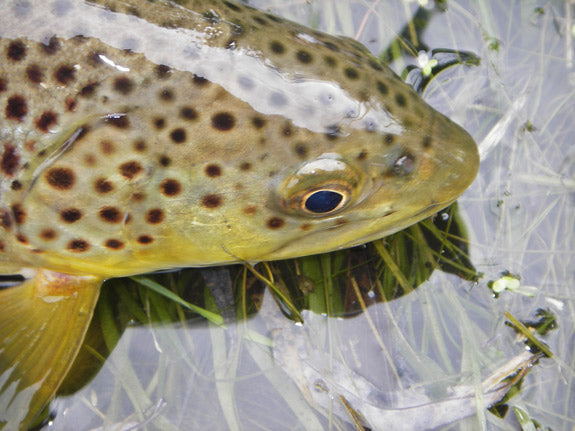
Late March to Summer
In late March the mayfly hatches begin with the quill Gordon showing up first and being followed two weeks later with the march brown. These are the two insects I designed the Mr. Rapidan Dry Fly to match twenty years ago and it is the favorite fly for most serious angler on these two hatches. When you spot rising trout go one-on-one with each one with a Mr. Rapidan Dry Fly #14. If the hatch is sparse on the day you are fishing you can still get great fishing with this dry fly by fishing below the riffles and in the tails of the pools.
The sulphur hatch is good here, beginning in the middle of May and lasting until the middle of June. Ed Shenk’s Dry Sulphur #16 and #18 is my favorite fly for this hatch. The duns start coming off heavily two hours before dark, and for the last hour of daylight you have both duns and spinners on the water. At this time the fishing can be outstanding as you wade slowly up the stream from one feeding station to the next.
Getting to Passage Creek
An entirely different section of Passage Creek is found in the far southern section of the Fort Valley in Crisman Hollow. Many anglers refer to this as the head of Passage Creek and although it is not managed as a delayed harvest part of the stream the fishing can be great in March and April. However, by summer this section is usually too low for good fishing. The same dry flies used in the delayed harvest section of the stream are effective here.
In the early part of the summer the fishing can be good in the delayed harvest part of the stream with beetles and ants. But with the removal of the no kill regulation in June and the low stream levels the fishing becomes very demanding through the summer.
Passage Creek is accessible by taking Route 675 East from Edinburg to Kings Crossing on to Route 678. To reach the delayed harvest section, take Route 678 north about 18 miles to Route 619 which leads to the fish hatchery. The delayed harvest section lies both upstream and downstream of the bridge on Route 619 which crosses the stream. There is also some excellent water in the George Washington National Forest just upstream of the delayed harvest section of the stream with some beautiful camping areas. To reach the extreme upstream section of Passage Creek in Crisman Hollow, take Route 675 south from Kings Crossing to the crossroads on Route 274 and Route 675. Follow Route 274 south to the parking lot about one mile south on the right. The stream is just west of this parking lot.
The appeal of fishing Passage Creek is threefold: beautiful scenery, rich history and great fishing.
Give us a call or stop by the shop if you need more up to the minute information.
-
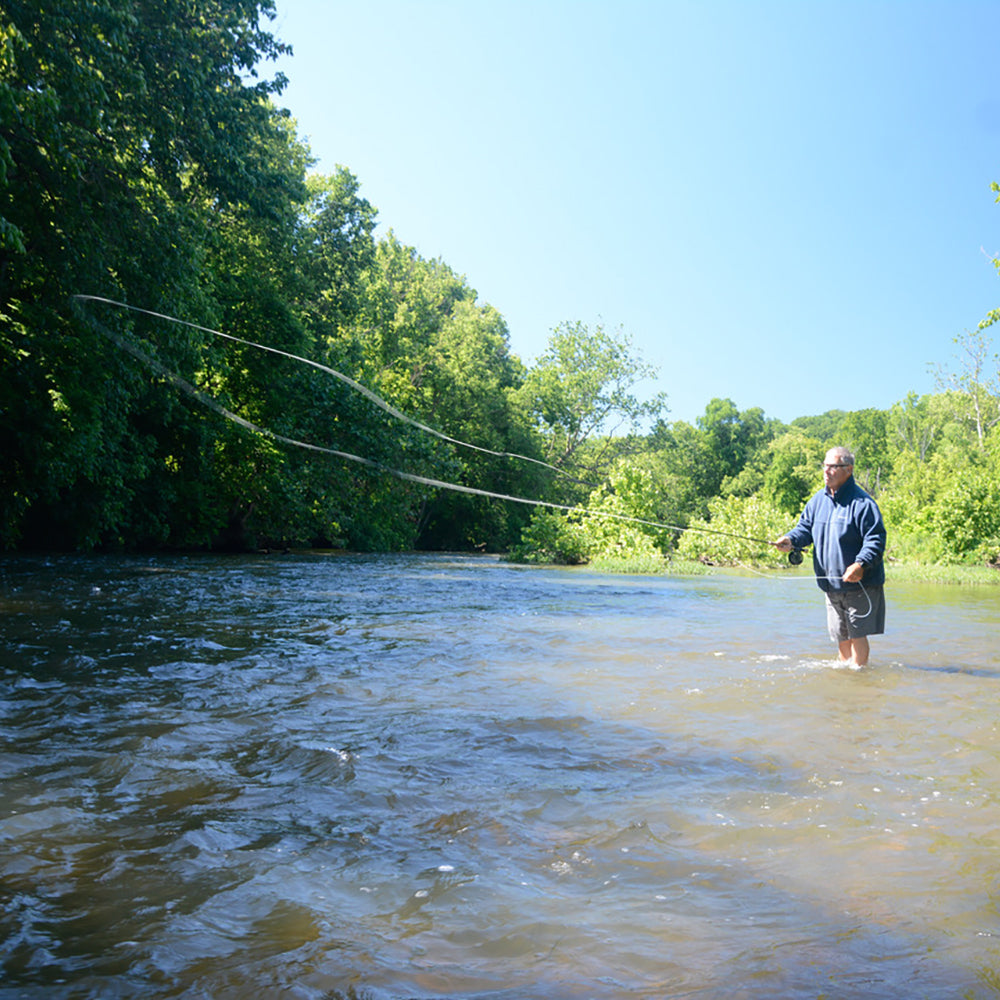
Learn Fly Fishing at Murray’s Fly Shop: Classes, Workshops & Schools
Welcome to Murray’s Fly Shop – Your Fly Fishing Learning Hub At...
-

Mr. Rapidan Flies for Trout & Smallmouth Bass Fly Fishing – Murray’s Fly Shop
Mr. Rapidan Flies for Trout & Smallmouth Bass Fly Fishing – Murray’s...
-
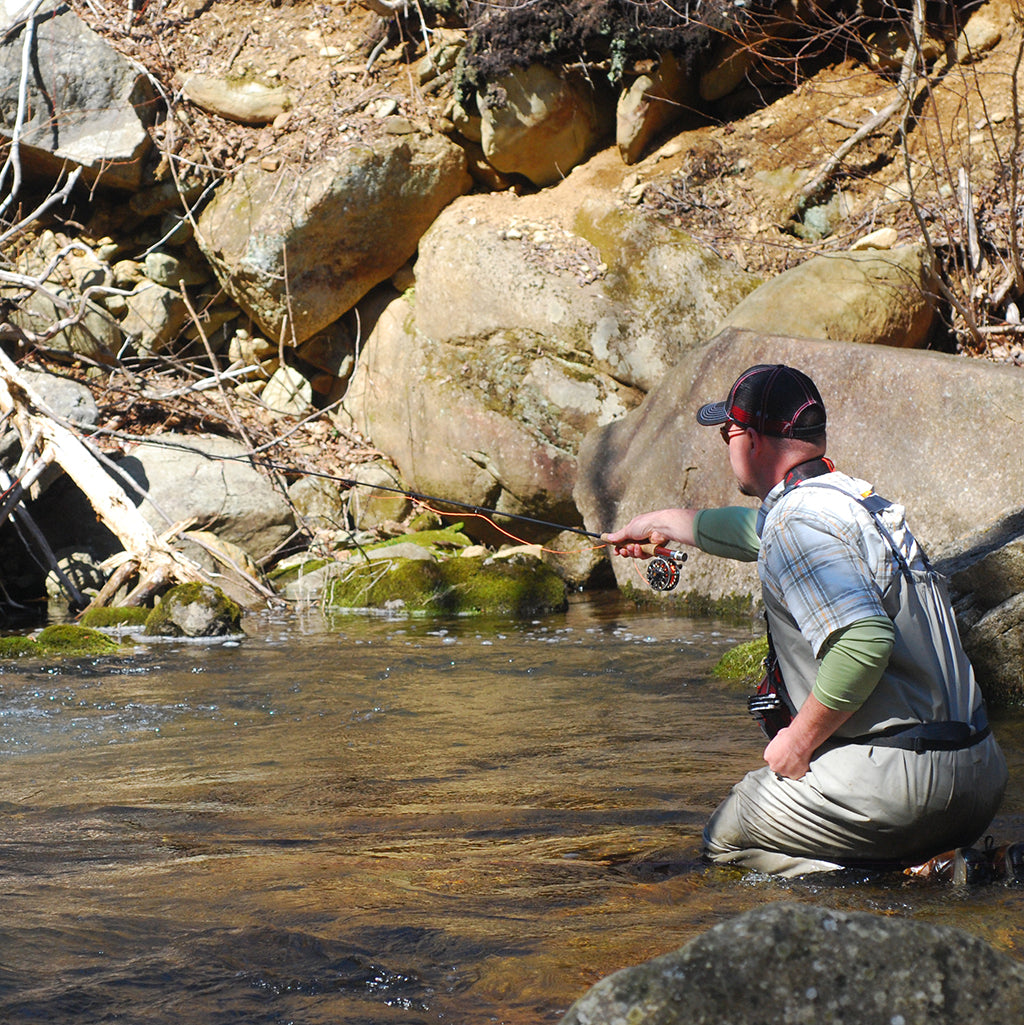
Small Trout Stream Fly Rod and Reel Outfits
If you enjoy fishing the smaller trout streams in the east or...
